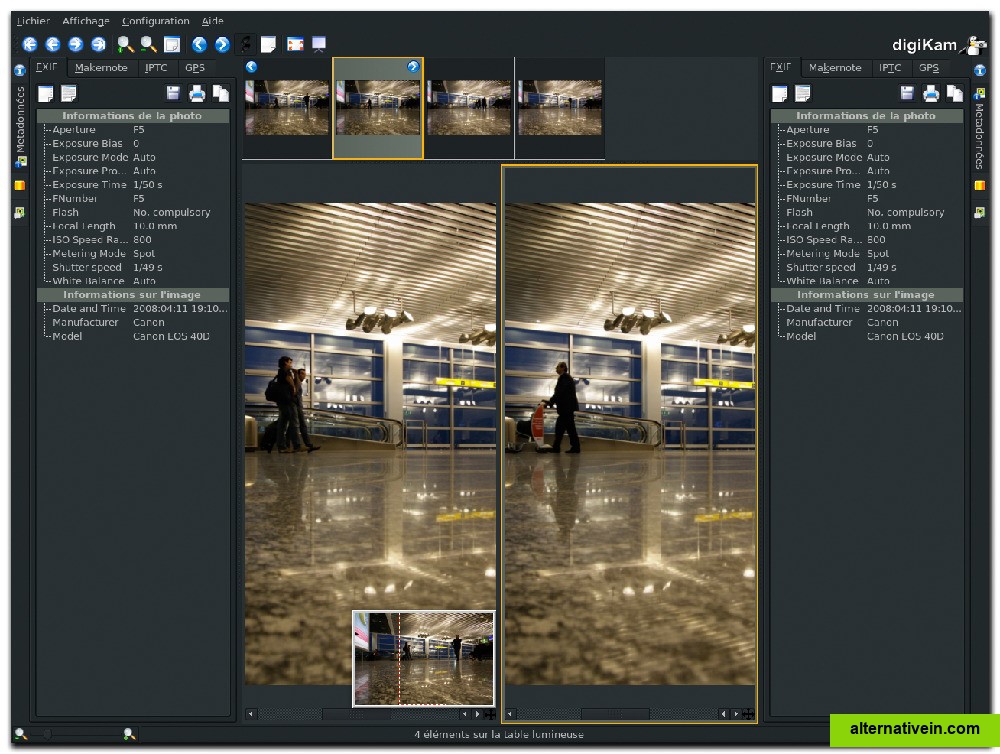
- Digikam photo manager how to#
- Digikam photo manager install#
- Digikam photo manager software#
- Digikam photo manager code#
Given that the program has a large number of dependencies, I’m skeptical that I would be able to compile the latest version without a large investment in time. It’s disappointing, but not unexpected, that Raspbian repositories host a fairly prehistoric version of digiKam. This wasn’t a showstopper, as there are alternative ways of adding images into the SQLite database. Once I had removed pulseaudio and rebooted, audio interference disappeared.Īnother issue is that trying to import images hangs digiKam.
Digikam photo manager install#
I cannot stress enough you don’t want to install that, it just causes problems. Pulseaudio is an unmitigated disaster on the RPI4. The fault lay with pulseaudio, which I must have installed to get some forgotten program to work. It transpired this wasn’t an issue with digiKam. As soon as digiKam is closed, the audio interference disappeared.
Digikam photo manager software#
I’ll illustrate a couple of the problems.īizarrely when the software’s running it interfered with audio playback from other software such as VLC or Tauon Music Box. That worked well too.īut I ran into a few problems running this program. “Light Table” is a really useful tool for viewing and comparing images. With albums and tags, it’s easy to manage your photographs and search for the ones you want. All of the basic image editing functionality worked admirably on the tiny machine.ĭigiKam excels at picture organisation. The software has a good range of image manipulation tools with blur effects, colour balance, adjust curves which lets you tweak the exposure, contrast, light, and shades. Most operations run fine and at reasonable speed. Here’s an image of digiKam with a small image library loaded. You’ll probably be fine running digiKam on the 1GB model as long as you don’t run any other intensive memory applications at the same time. Not a like-for-like comparison as the Celeron-based system is running the latest stable release.ĭigiKam’s memory footprint on the RPI4 is also not insignificant, with the program consuming 192MB at startup (but that’s a lot lower than the 450MB of RAM that version 6.4.0 uses on an Intel-based machine). For example, with a standard Intel processor (a weedy Celeron J1900 which is barely quicker than the RPI4’s processor) startup is 12 seconds with a cold start. How does digiKam 5.9.0 fare on the RPI4? First off, startup time is a tad sluggish, taking 19 seconds from a cold start. If you have compiled the latest version, please share your findings in the Comments section below. Given the amount of dependencies, I fear it won’t be trivial.
Digikam photo manager code#
I’ve not tried to compile the source code for version 6.4 or the beta 7. So bear in mind that the Raspbian package misses out on a ton of development. The Raspbian package gives us digiKam 5.9.0, released back in March 2018. There’s more configuration options available in the program itself.Ĭurrently version 7 of digiKam is in beta, with the latest stable release being version 6.4, released in November 2019.


Digikam photo manager how to#
The wizard lets you choose a location to keep your images, which database to use (SQLite, MySQL internal, or MySQL external), how to open RAW images in the editor, configure metadata storage to files, configure preview behaviour, open file behaviour, and whether or not to show contextual tooltips. On first run, you’ll get an assistant wizard which offers a convenient way to configure some of the basics. It appears there’s a conflict with the gtk2 style, as changing it to another style (such as cleanlooks) gets digiKam up and running. After a bit of experimenting, I discovered the solution is to to run the Qt5 Configuration Tool (qt5ct from the command-line). But the terminal output didn’t highlight the problem. In my experience, it’s often because of a missing library. In circumstances like this, it’s best to fire up a terminal and run the program from a command-line, as it’ll often reveal the source of the problem. However, starting the program from the menu yielded nothing. Installing the program adds a menu entry to the Graphics section. That might be an issue if you’re running the RPI4 from a small microSD card, and you’re already running low on space. In total, installation uses 336MB of space on my system. As the image to the left shows, installing the package in the usual way pulls in a ton of other programs. There’s a convenient package available in Raspbian.


 0 kommentar(er)
0 kommentar(er)
